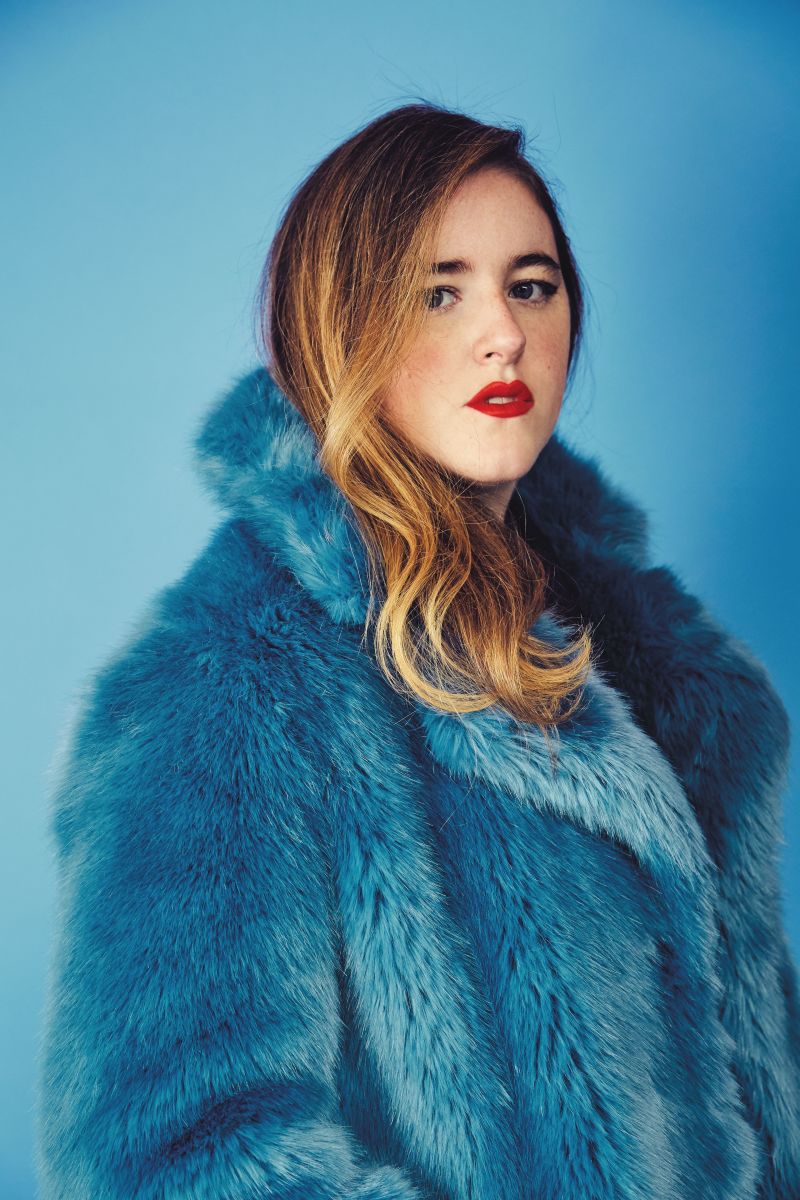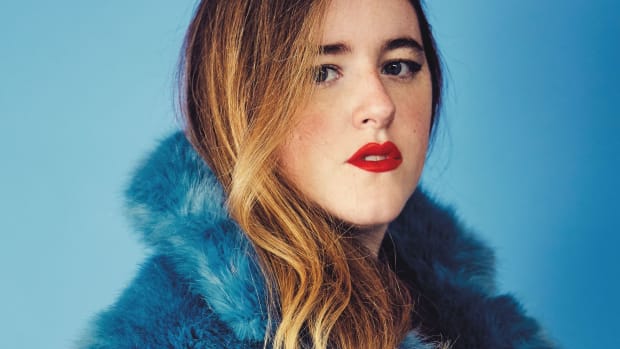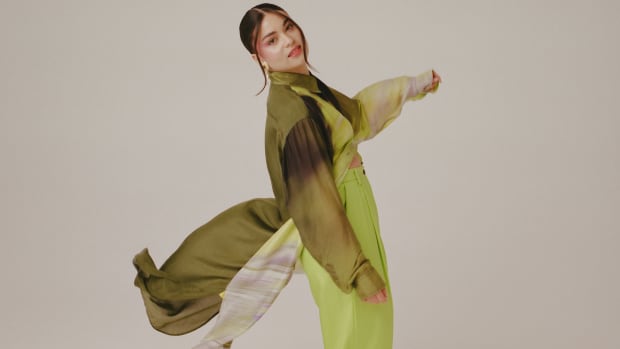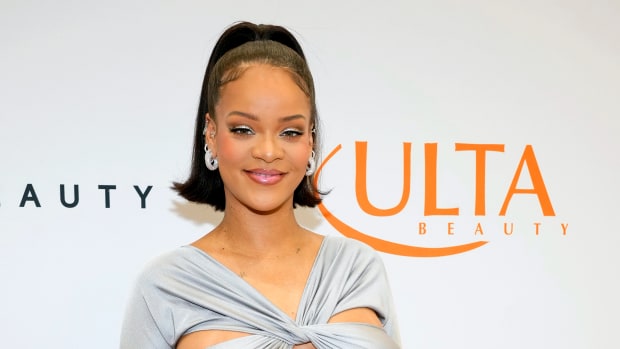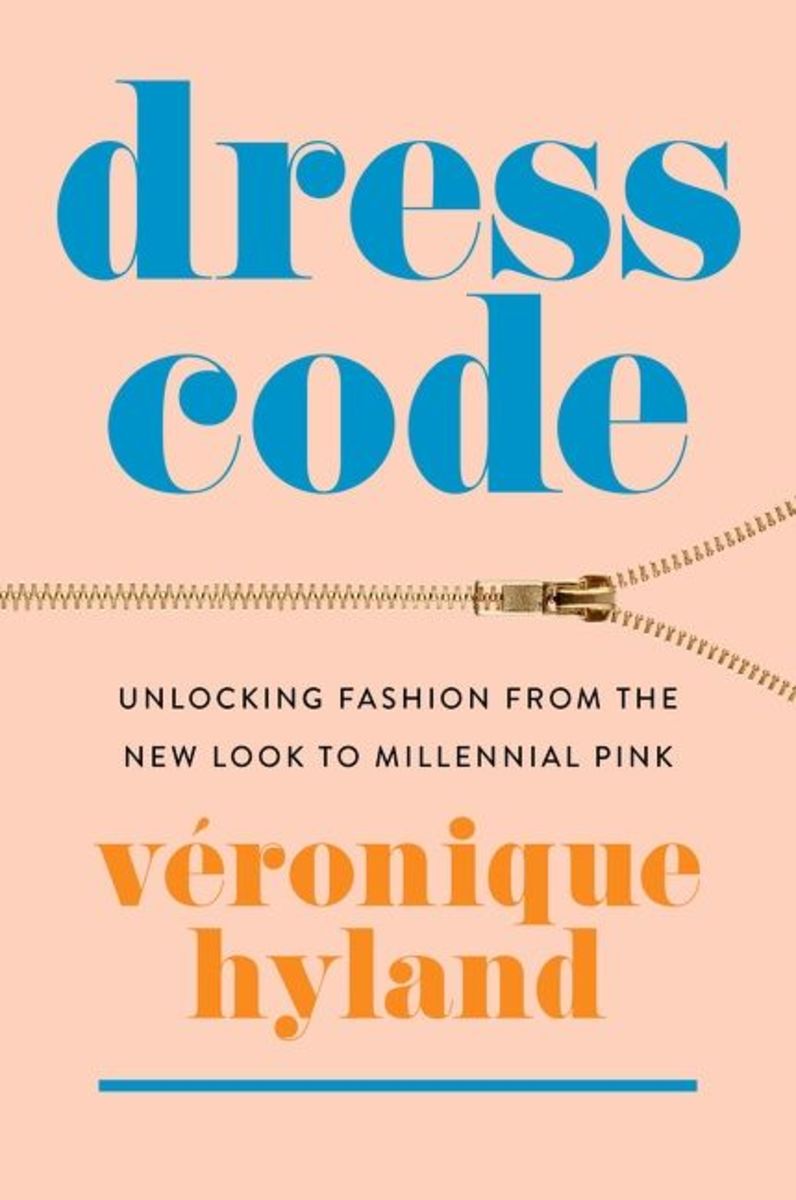Photo: Meredith Jenks Trunk Archive/Courtesy of Harper Collins
If you're looking for a book about fashion, you don't have to try very hard: Whether you want gorgeous, glossy coffee table books packed with beautiful imagery or dishy, insider-penned memoirs about the ins-and-outs of the industry, there are plenty of choices on the market sure to end up on your GoodReads shelves (and with more coming seemingly every week).
But I can safely say that I haven't read much out there like Dress Code, the new book from Elle Fashion Features Director Véronique Hyland.
In just 15 concise essays, Hyland attempts to contextualize fashion's role in everything from courtroom appearances and Congress to red carpets and Instagram influencers. She lays the groundwork for each topic in a historical background, before building out a full-scope look on its impact on today's society. She purposefully avoids capital-F Fashion in favor of making connections to the more mundane, everyday choices we all make about clothing and the less obvious — and perhaps more insidious — ways we're marketed to.
It's the ideal kind of fashion book: one which is about fashion and which is willing to take fashion seriously, but not so seriously as to alienate people who wouldn't count "fashion" as one of their primary interests.
"More recently, titles that have come out about this are more in the vein of a shopping guide, or they're very academic books that are like, 'What is fabric?' I definitely wanted it to be accessible; I didn't want it to be overly exclusive," Hyland explains. "I feel the fashion world is exclusive enough, and I've always been all about inviting everyone in, honoring everyone else's perspectives and not being in an ivory tower."
I came away from Hyland's book with new POVs on the topics I cover every day in my job — no surprise, considering how insightful I find Hyland not just on the matter of fashion, but on life in general. (And I'm not just saying that because we're friends. Though, in the interest of disclosure, I count Hyland amongst my industry buddies.) Even more impressive, Hyland penned the majority of her book at the beginning of the Covid-19 crisis, which is no small feat.
Frankly, I'd take any excuse to talk fashion with Hyland, so this provided an excellent opportunity to catch up with her about everything from the start of her own career to where she sees the future of fashion criticism heading. Read on for highlights from our conversation.
You talk about this a little in the book, but what ultimately drew you to fashion?
There was this element of being so close, yet so far. I was geographically close to New York City, but culturally far away, but lucky to have access to some things that were going on in fashion in New York and lucky to have access via the nascent fashion internet — style.com and stuff — when I was younger. I also think clothing was a form of asserting identity, exploring identity, taking back some control and being able to express myself.
All of those things really drew me to it, but also I was just very unrealistic about how it all worked. I didn't know anybody who worked in fashion. I didn't have those connections. I would just read magazines and read about these people, and it didn't feel like real life. It just felt like this escapist, fantastical world. And when I did actually end up meeting some of the people in it, it was just like, "Oh, these are real people doing real things and it's a job, it's an industry." I don't think I necessarily thought of that. I just saw it as this form of escape.
How did that switch for you?
It took a while. When I was in college, Women's Wear Daily did a college issue, and they came and reported on what people were doing regarding fashion. They interviewed me, either because I had done costume design or because I had written a little bit about fashion — there was a student fashion designer on campus, and I had written a piece about him. That's how I ended up getting my first job. The woman who wrote that story, Nandini D'Souza, I just emailed her asking for advice. I was unemployed, living with my parents, trying to find a job post-graduation, and she very generously was like, "We're actually hiring for a newly created position at WWD." I hadn't known that they hired a lot from the college issue; that was actually a pipeline for them at the time.
That was a very instant immersion into everything that was going on, because I was going to some shows in Bryant Park and meeting all these people. It was a really immersive way to start in fashion, because we used to do this feature where we would go to all these designer studios before fashion week and have a photographer take pictures of them getting ready. I remember going to Michael Kors' studio and shooting the breeze with him, and then the next stop is some new designer in the garment district. You really saw all sides of it, from the really big brands, the corporate brands, and you had this entrée because it's Women's Wear Daily, so people want to be featured. They respect it, but it definitely went from zero to 100, because I didn't think I was going to be making small talk with some of these people for my job.
It's so wild to think about that now, too, because I feel like so few people would even grant that access anymore.
I don't know that they do this feature anymore, and it was a very specific thing, but I think it's definitely gotten tougher. People are a little bit more media wary across the board. But this was nice because it was really a photo essay and there wasn't much written material. I truly was just there to talk to people and make sure they were comfortable and distract everybody. It was all of the fun and none of the work.
But I distinctly remember the conversations. I remember Michael Kors talking about Emilio Pucci designing for Braniff Airlines and all the different flight attendant fashions — this is in the book — because I think there was some flight attendant inspiration. He was asking the models if they knew such-and-such designer, if they knew about Studio 54. All of this stuff is permanently with me, just burned into my brain.
So how did you get from that position at WWD to where you are today at Elle?
I worked at Women's Wear for four years. When I was there, it was also the sister publication of W, so I got to write for W as well and learn about how a magazine is put together. I ended up leaving, and my boss went to Harper's Bazaar; she hired me there, initially just to do indexing, which means taking the print stories and translating them for online, building them. It was a very programming-heavy job, because I'd been doing a lot of programming stuff at Women's Wear Daily. I'm lucky, because they were starting to up their digital presence a little bit more, so they would say, "Do you want to write about X, Y, Z for the website?" Kristina O'Neill was there and she was really supportive; then Joyann King, who was the site director there for a long time, was really a mentor as well.
I started working my way up to writing more, then writing for the magazine and then working in the features department — although I was still doing a lot of fashion and working for Laura Brown, getting to really be involved with every single part of that publication. Once I was in that magazine world, it was a pretty easy move to go to Elle; I was a fashion news editor there. I went to The Cut to do basically the same job, and then they brought me back to Elle almost five years ago.
In every case, it's been about knowing someone, whether it was literally the only person I knew who had any involvement in fashion, to then coworkers and people who recommended me for later stuff.
I don't want to make it seem like it has been super easy to get to that point because it hasn't — and really, I think the big factor here is that my family lives pretty close to New York City, so I was able to live with them and save money. Especially early on, I wouldn't have been able to do it any other way. I'm really lucky in that sense, because it's not an easy industry to break into or stay in, and especially in the early days, it was challenging.
I'd be curious to know, from your perspective, how the industry has evolved in that time period.
I had people who were taking it seriously and saying, "Oh, you should write this article," and really sensing the reactive potential of, "We saw this trend in Paris today, and you can write about it today." But I do think it's taken a while for some of legacy media to catch up to that.
I really like being involved with print. I like working on a product that involves a fact-checking process and editing process, taking time, all of these things. But I'm pretty open to all of it; I do a weekly column now on Elle.com, and I like being involved with all parts of it. I think there's been an evolution of people taking it more seriously, realizing that you can tell a story in multiple ways and work together to tell it through print, digital video, social; and that all those components have to work together.
What's nice about where you're at now is that you can do the more reactive, internet-native pieces, but you also can do your monthly work for the magazine and take the luxury of time of developing your thoughts.
Yeah, absolutely. And when I came in, I really knew that I wanted to work with a wide group of writers, to commission people who maybe haven't written about fashion before and to look at it not just from my viewpoint, but bring in all different kinds of viewpoints. That's something that's been really important to me, working with writers on stories and really perfecting everything. Elle has this reputation for, first of all, really smart writing about fashion, beauty, culture, and we devote a lot of time and energy to supporting up-and-coming talent. That's something I've been able to do a little bit more with the column as well, because if I'm excited about someone, I can talk about them right away.
But that's something that there's less and less space for nowadays in media, I think, because everything is so celebrity-driven or big name-driven, so it's really important for me. I've been doing this new designer stuff since I started, but it's always been my biggest interest: getting to see those people grow and hopefully get really cool jobs. All of it is very gratifying.
Where do you feel the priority is currently in the conversations that we're having about fashion, when you're thinking about stuff for Elle?
I think a lot of fashion coverage is just, "We saw these three things, they're a trend, moving on." End of article. When I present a story idea, something that our editor-in-chief has always reminded me is to talk about the why, as opposed to just saying, "Crops are trending," or whatever it is — getting more into the why, and what that's saying about where the culture is and going a little bit deeper. I've found writers who can do that, and I push writers to do that too.
Marlowe Granados, who's a novelist, came to me with this idea about sensuality in this world of body-conscious designs and distinguishing that from true sensuality, looking at collections like Prada and how it evoked that and why that's such a lost art. That was an immediate yes, and she had really interesting things to say about that. She's a beautiful writer.
On the newsier end of things, TikTok is obviously something I've been paying a lot of attention to. I had seen that there were all these vintage accounts bringing back Pucci from the '60s and Courrèges from that same era, things that you wouldn't necessarily expect Gen Z to be connecting with as much; having this constant access to fashion history, how that's shaped everyone's tastes, how that's shaping what the vintage sellers are looking at. Then I was curious, the designers of those brands now, are they influenced by that? Are they watching TikTok? So [the author, Kate Dwyer] talked to the designer of Courrèges, the designer of Blumarine, and it was interesting to see that there's this feedback loop where they're like, "This is really big on TikTok; how do we reinterpret this in a current collection and put our own spin on it?"
Recommended Articles
All of that stuff with nostalgia and fashion history is so interesting, because the amount of knowledge that people have access to now is really amazing. But it's also creating these super short trend cycles and this instant nostalgia. That's all been interesting, to witness the 2010s coming back and indie sleaze and twee and all these things that, at least for me, haven't even gelled because I don't have that much of a perspective on them, but you're seeing people already reviving them.
It's interesting to look at how we remember these things, people who experienced them then versus who are experiencing them now secondhand — the things that have stuck out to people and the way that's been turned into this aesthetic — because Y2K people were not walking around covered in CDs. People were not all dressed like they were at the VMAs. I remember that for sure. There's some link to politics, culture, what have you; it's not too dissimilar from what I was trying to do with the book.
That's what I want to talk about, the book — so tell me a little bit about how it came about for you.
I kept saying to myself, "Someone should write something like this," but I didn't immediately identify myself as that person. I had some ideas floating around, and I felt I wrote about stuff in the moment — everything is very much based on what's next, I wanted to look back a little bit.
I also felt a lot of the conversations we were having about fashion and beauty and influencers and all these things, they weren't informed by much of a historical perspective, and I thought that's something I could bring. For conversations about influencers, let's talk about how Edward Bernays was hiring women to be influencers to promote smoking back at the turn of the century, how influencers have existed well before any social media platforms; or looking at the way that leggings are legislated now as compared to something like bloomers, which were also a garment that promised to liberate women, but was banned, in a lot of cases. I'm trying to connect the past and present there a little bit, because I would find that there wasn't that much room in some of these conversations for nuance or a perspective that went back more than 10 years.
I like that it's not a capital-F Fashion book; it's tying together fashion and politics, or fashion and youth culture. And I loved that you open with the millennial pink essay because reading it, I had completely forgotten that you basically invented that term, and now it's so ubiquitous.
I don't want to give myself too much credit, because I was just writing a trend story that I didn't think would go anywhere. But it was interesting to see how it became this huge thing that then moved into all these spheres, like the corporate sphere and politics and then Q Anon. It's also something that's constantly being declared to be dead or replaced by this other thing, but hasn't. I would say nothing has come along to replace it that has been so talked about, and this is another one of those conversations where it's like, people are just going around in circles with it.
It was something where it distilled all these things about marketing to people, to generations, to trying to use aesthetics to sometimes paper over something much more undesirable. I'm just fascinated by that stuff. That essay isn't 100% focused on fashion — it's about this more as a cultural moment. But I felt there were definitely antecedents; that's why I brought in the Christian Lacroix designs and all these moments of hyper-femininity and traditionalism that always seemed to come about when women's place in society or the rights that we've attained are being threatened.
Actually, when I was writing this, I was like, "I'll probably have to change all the stuff about abortion rights being rolled back and things like that." And I did, unfortunately. I would like to have been able to say that situation hasn't worsened, but I just think it's interesting what's going on. Sometimes what's going on in the runways is seen as so remote from what's going on in the world, but [I want to] make those connections between those things. I think that essay is a prime example of what I was setting out to do.
You say this in the book, but fashion is one of the few things left that it's okay for people to write off as being not serious. There are all these niche interests that you can intellectualize, but there's so much resistance still to intellectualizing fashion. I think you do a good job presenting the idea that, yes, that capital-F Fashion exists, but not only is it maybe not the most prevalent force in fashion itself, it also doesn't exist in the vacuum. I really appreciate what you're setting out to do in the book, which is creating these paths to a bunch of other things that are influenced by or influencing fashion.
You can't opt out. With beauty, you could argue that you can't opt out, either, but you don't have to wear cosmetics or dye your hair, do all these other things. You have to wear clothes. So it irks me when people say that it isn't important at all and that they don't pay attention to it. It's fine if you're not interested in it, but some message is coming across with what you're doing.
That comes across in the politics essay a lot, because there's been so much hand-wringing over what Kyrsten Sinema was wearing or what AOC was wearing. It's obviously people on all different ends of the political spectrum, and there's some bad faith takes on all of this, but the idea that we shouldn't be commenting on what public figures who are elected to be in the public eye wear — and the messages that they're sending with their fashion — is absurd to me.
Maybe I'm just in a bubble, but I thought those attitudes were dying out a bit. But while trying to sell this book, I definitely encountered that, because there was some feedback that was like, "We don't see an audience for this," or, "This is a niche topic." I really felt like this isn't a niche thing. I know lots of people who are interested in this type of book, and they're not all people in the fashion industry. It's been gratifying to see, even though it's not out in the world yet, people commenting that this is something that's interesting or made them think.
Fighting against that perception has also been interesting, that it can't be serious;
trying to even categorize it, I'm like, "Well, this is a book of essays. It's not a coffee table book, and it's not a book about trends." It's been interesting to enter another industry and see how differently stuff is perceived, because working at Elle, we all take this stuff super seriously. Everyone's incredibly smart.
But in terms of asking whether this is a subject for study and discussion? It seems crazy to me that there's still debate about that.
I feel there's a very long tradition of serious, intellectual writers having books or essays about fashion, right? I'm sure that you have a ton of reference points for that.
I looked at Kennedy Fraser a lot because I was really influenced by her book, The Fashionable Mind, which is her essays from the New Yorker. I also looked at Anne Hollander's book, Seeing Through Clothes.
When you're selling a book, you need comps; you need to say, "This person-meets-this." Some of the comps were Bad Feminist, because that talks about pop culture and considers it in a very serious way; Trick Mirror, which I think has thematic overlaps; and then Anne Helen Peterson's writing, the stuff that she did about classic Hollywood, for example. But there weren't comps that were specifically about fashion that I could find.
It does feel like fashion criticism in general is moving away from the very traditional format of outlets having a fashion critic on staff.
Right, absolutely, and it's a bummer, because I would like to see more of that writing and real critique. Even though I don't necessarily agree with every single person's opinion, I like seeing that variety of opinions and seeing how people react. I think it has found a little bit of a home in other mediums. I can't speak to TikTok as much, if people are doing fashion criticism on that, but I definitely look at what James Scully is doing on Instagram; he's very candid about what he's seeing and his reaction to that. I know that there's people who do fashion critique on YouTube, but I wish there were, obviously, more people doing this, more people writing about it, because I just find it fascinating to read and write about.
Your writing is also very funny — there are parts that I was actually laughing out loud, because I could hear it in your voice. Obviously it's serious, but it's voice-y and it's not taking itself too seriously.
I really wanted it to feel light and accessible and fun. My big selling point to people has been that this isn't a downer or a drag. I don't think anyone wants to read that right now. People are more drawn to comfort reading and light reading. While this talks about serious stuff, I wanted to keep it engaging, and I didn't want to fall into the trap of being hyper-serious about it, because I think sometimes there's that lack of humor in our industry.
Fashion moves so quickly that I would imagine writing a book would be quite intimidating, because after you finish something and turn it in for edit, I'm sure that there's a million things that happened that you could add or edit or amend. You were also writing it during Covid, which in and of itself is a challenge. How were you able to tackle that?
I turned in the first draft in September 2020, and obviously, there were a lot of changes subsequent to that, just because so many of the things that were happening were moving targets, like the Anna Delvey trial and Elizabeth Holmes trial — I don't think either is completely up to date in there.
With Covid, I was talking to my editor about incorporating that into more chapters and looking at the way it's changed how we dress for work — or how, I should say, a lot of white collar people dress for work — and talking about how it impacted the remote learning and the school dress codes, because weirdly, it seemed the school dress codes were still very strict even when students were just on Zoom at home. It came in at various points, but that just required a lot of revising, talking and gut-checking certain things. It got to a point where I realized this is something that we're going to be dealing with for some time, and it needs to be incorporated in every part of the book that makes sense.
It's been interesting to see how that has, or hasn't, changed the way the industry works — and I didn't really get into that too much. The prospect of having virtual shows or doing things differently, scheduling things differently, and people finding new ways to stay hand out has been fascinating to watch, and how an industry that's so built on innovation and envisioning the future sometimes still does things super traditionally and is resistant to change. That's one of the contradictions that I always keep going up against.
What do you hope the takeaway is from the book?
Ideally, people would come away from this with a little bit more reflection about why they make the choices they make and the way people choose to put themselves together, what that means, interpreting and looking at that a little bit more critically. I'd also like to bring a little bit more of the past to bear on the present, looking at the cyclical nature of everything, because a lot of the stuff that makes up these endlessly-dissected conversations are things we've actually been discussing for years in different forms.
And I just hope it entertains people, maybe introduces them to some new terms or designers or things like that. I really want it to reach a wide variety of people — not just for my own ego, but because I do think there's an interest and a hunger there, it's just not as discussed outside the precinct of fashion publications.
This interview has been edited and condensed for clarity.
Want the latest fashion industry news first? Sign up for our daily newsletter.

